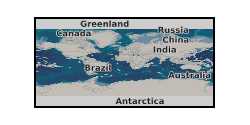Image analysis
Type of resources
Available actions
Topics
Keywords
Contact for the resource
Provided by
Years
Formats
Update frequencies
-

P* data obtained through hydrostatic loading experiments, using triaxial experimental apparatus, as well as yield curve data obtained through differential loading tests, prior to the discovery of P* for different synthetic sandstones. The methodology used was taken from Bedford et al. (2018, 2019). Grain size analysis data obtained using a Beckman Coulter LS 13 320 laser diffraction particle size analyser. Particle analysis was conducted on five different synthetic sandstones with different grain size distributions. Secondary electron and backscatter electron SEM images for natural and synthetic sandstones. Secondary electron images were stitched together to form a whole core image. They were then binarised following the methodology of Rabbani and Ayatollahi. (2015). Hexagon grid size data used to obtain the correct grid size for performing porosity analysis across an mage using Fiji software (Brown, 2000). Bedford, J. D., Faulkner, D. R., Leclère, H., & Wheeler, J. (2018). High-Resolution Mapping of Yield Curve Shape and Evolution for Porous Rock: The Effect of Inelastic Compaction on 476 Porous Bassanite. Journal of Geophysical Research: Solid Earth, 123(2), 1217–1234. Bedford, J. D., Faulkner, D. R., Wheeler, J., & Leclère, H. (2019). High-resolution mapping of yield curve shape and evolution for high porosity sandstone. Journal of Geophysical Research: Solid Earth. Brown, G. O., Hsieh, H. T., & Lucero, D. A. (2000). Evaluation of laboratory dolomite core sample size using representative elementary volume concepts. Water Resources Research, 36(5), 484 1199–1207. Rabbani, A., & Ayatollahi, S. (2015). Comparing three image processing algorithms to estimate the grain-size distribution of porous rocks from binary 2D images and sensitivity analysis of the grain overlapping degree. Special Topics & Reviews in Porous Media: An International Journal, 6(1).
-

These spatial and temporal image datasets are of mixing fluids in a dyke-like (slot) geometry investigated using low-temperature laboratory experiments which are described in the paper Analogue experiments to investigate magma mixing within dykes (Havard et al., in review in Bulletin of Volcanology, January 2025). The experiments are low-temperature analogue models of magma mixing within dykes and are dynamically scaled to the natural system. Seven unique experiments using seven different miscible fluid pairs, representing two magmas of differing composition, were conducted at the University of Liverpool. The miscible fluid pairs were (and the shortened experiment name is): water and diluted glycerol (ExpW1); water and pure glycerol (ExpW2); water and glycerol mixed with golden syrup (ExpW3); water and pure golden syrup (ExpW4); diluted glycerol and pure glycerol (ExpD1); pure glycerol and diluted golden syrup (ExpG1); pure glycerol and pure golden syrup (ExpG2). The experiment setup consisted of the lower density fluid placed above the higher density fluid in the tank apparatus, then the tank was inverted to initiate the interaction between the fluids. The raw data is a temporal series of photographs (JPGs) collected over the course of each experiment located within the subdirectories “Raw”. The raw data is processed using the scripts accompanying the dataset to show how density and mixing evolves spatially and temporally within the slot. Further details are available in the directory metadata file.
 NERC Data Catalogue Service
NERC Data Catalogue Service